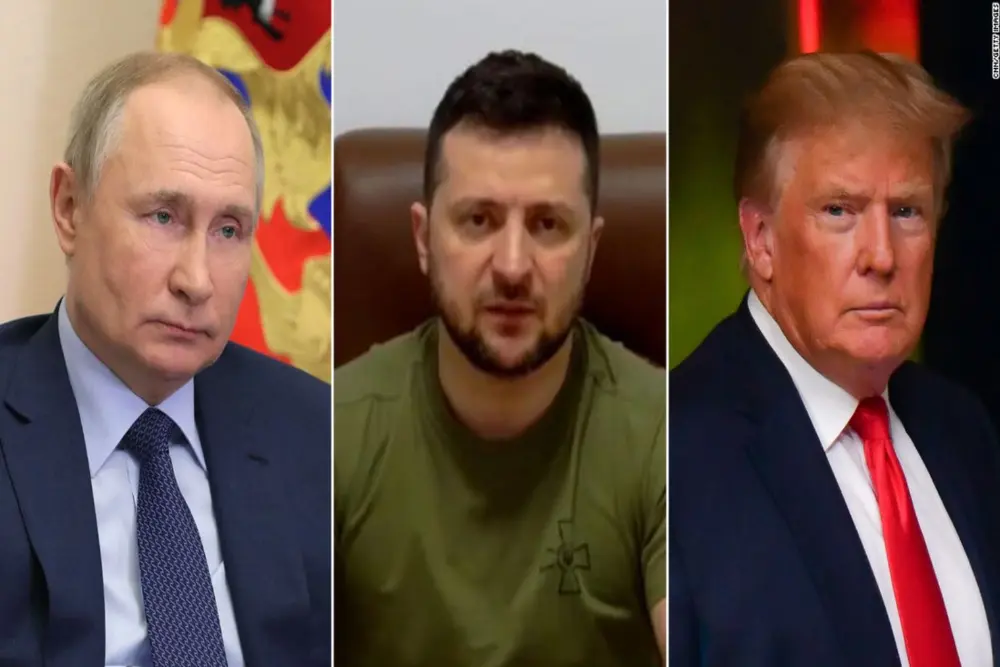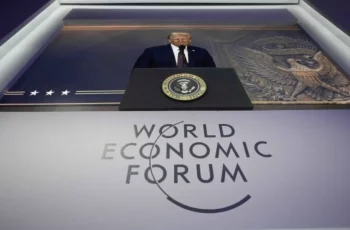
The United States and Russia have reached an agreement to develop a plan aimed at ending the war in Ukraine during high-level talks held in Saudi Arabia this week. Notably, Ukrainian and European representatives were not invited to participate in the discussions.
While the talks were publicly framed as a step toward peace, deeper geopolitical and economic factors appear to be driving the unexpected willingness of both U.S. President Donald Trump and Russian President Vladimir Putin to explore a resolution to the conflict. Critics argue that behind the peacekeeping rhetoric lies a complex power play, centered around strategic interests, global influence, and economic gains.
During the negotiations, President Trump signaled a willingness to concede on two major points that have long been core objectives for President Putin. First, the U.S. appeared open to softening its opposition to Ukraine’s potential NATO membership—a move that would align with Russia’s desire to keep Ukraine out of the Western military alliance. Second, Trump did not push back against Russia’s ambitions to maintain control over territories seized since the 2014 annexation of Crimea.
However, Trump’s motivations go beyond simply appeasing Russia. A critical driver behind his willingness to negotiate is the fierce global competition for access to rare earth minerals—resources vital to modern technology, clean energy solutions, and military applications. Ukraine holds vast reserves of these critical minerals, including lithium, cobalt, titanium, scandium, and zirconium. These elements are essential for industries ranging from electronics and aerospace to electric vehicles and nuclear energy.
Russian forces, which have already occupied a fifth of Ukraine—including areas with rare earth mineral reserves—are now less than 4 miles from the Shevchenko lithium deposit and advancing toward it from three directions, according to open-source data from the Ukrainian military blog Deep State. Ukraine holds an estimated 500,000 tons of lithium reserves, while Russia has twice that amount, according to U.S. government estimates.
This month, Trump proposed that Ukraine provide significant access to its critical mineral reserves in exchange for continued U.S. military support.
Trump’s conditions for access to Ukraine’s resources “concern everything from ports to oil and gas,” they are “worse than the reparations imposed on Germany,» — The Telegraph.
According to the draft agreement, which was reviewed by the publication, Washington and Kiev should form a joint investment fund: it is designed to ensure that “hostile parties to the conflict will not benefit from the restoration of Ukraine.”
The Trump administration wants the United States to take 50% of Ukraine’s current revenue from resource extraction, as well as 50% of the cost of “all new licenses [for resource extraction] issued to third parties.»
The agreement states that “with regard to all future licenses, the United States will have the right of first refusal for minerals suitable for export.»
While The Telegraph and El País reported that Ukrainian President Volodymyr Zelenskyy initially suggested opening up Ukraine’s resources to American investment, he did not anticipate the extreme conditions laid out by Trump’s administration. “He probably didn’t expect terms that are harsher than those imposed on Germany and Japan after World War II,” one analyst noted, likening the deal to “economic colonization of Ukraine on a legal basis.»
Trump’s handling of the negotiations has also created friction between the United States and its European allies. Speaking at an investment forum in Miami, Trump criticized Europe for contributing significantly less than the U.S. to support Ukraine. “We spent $200 billion more than Europe,” he claimed, adding that “At the same time, Europe gives money under guarantees, they will receive the funds back. This is a form of loan,” while the U.S. was “just giving money away» without getting anything back.
He also expressed frustration with what he perceives as mismanagement of U.S. funds by the Ukrainian government. Referring to Zelenskyy, Trump sarcastically remarked: «On top of that Zelensky admits that half of the funds transferred by us have disappeared, they do not know where they are. He said he did not know where half of the funds had gone. Just great, wonderful».
In a direct statement, Trump added, “We will try to get back our money that we gave to Ukraine,” reinforcing the idea that his administration is seeking tangible returns for American financial support.
Despite his sharp rhetoric and aggressive economic demands, Trump framed his role in the negotiations as a peacekeeping effort. “I will go down in history as a peacemaker,” he declared.
While Trump’s motivations appear economically driven, Putin’s reasons for engaging in peace talks are more complex. Securing control over Ukraine’s mineral-rich territories can provide a significant economic incentive. With global demand for critical minerals skyrocketing, Russia could strengthen its position in the global energy and technology markets by controlling both its own reserves and Ukraine’s.
The unexpected decision by both Putin and Trump to pursue peace talks in Saudi Arabia raises critical questions about their true motivations. While the narrative presented to the public focuses on ending the war in Ukraine, it’s clear that both leaders have strategic interests driving their actions.










Comments